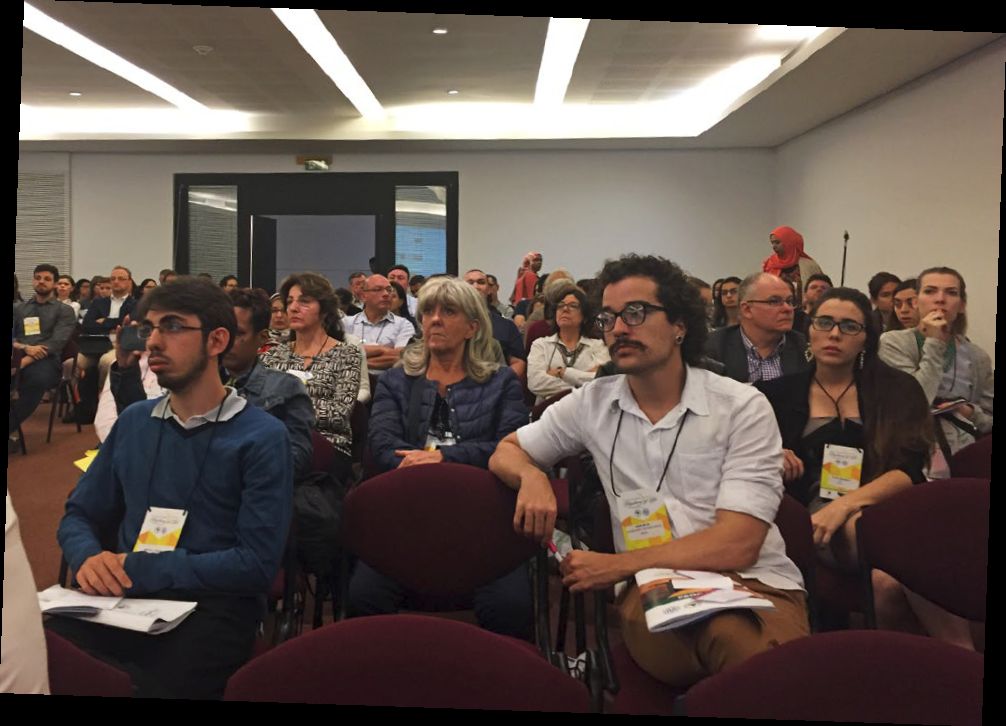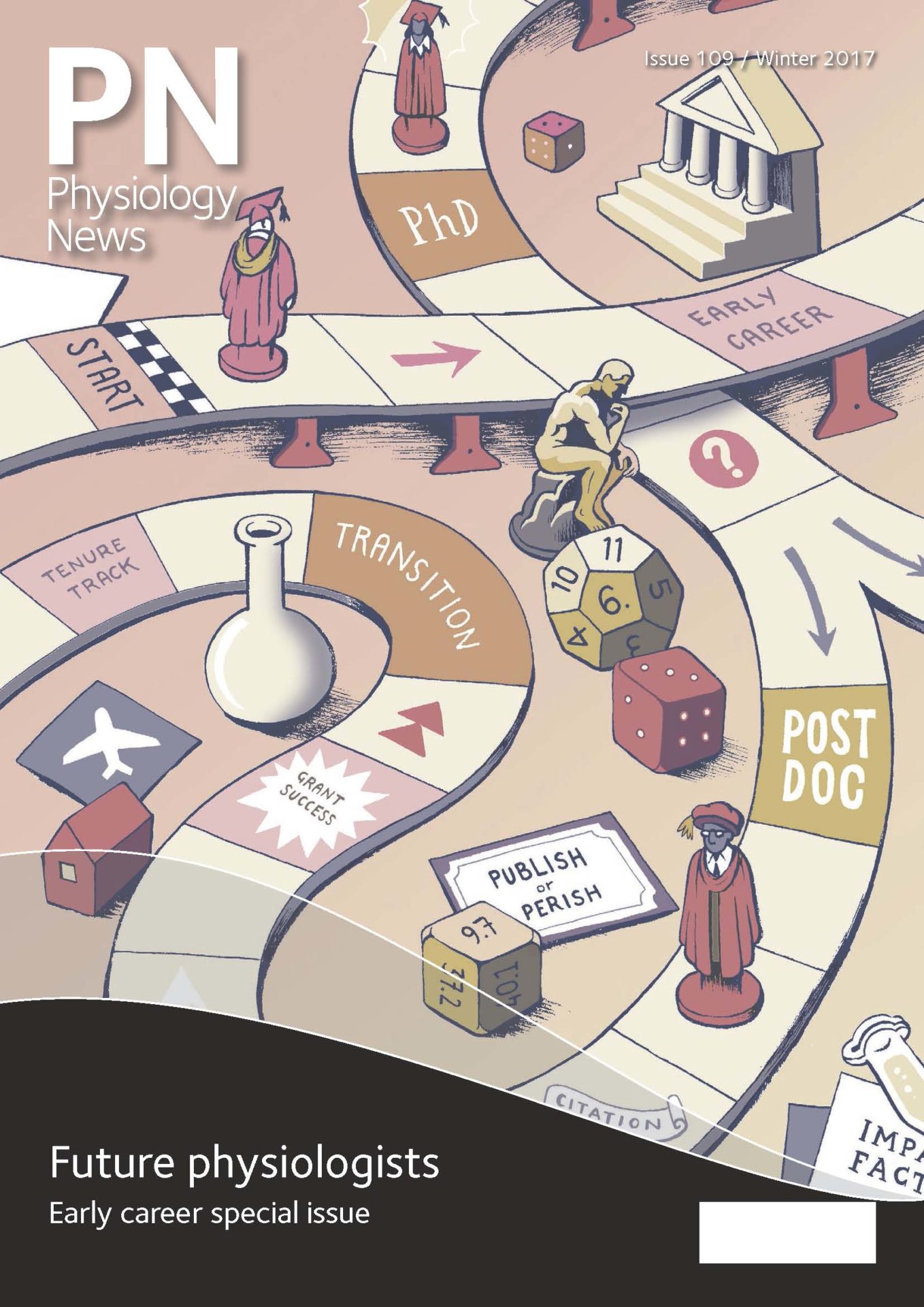
Physiology News Magazine
IUPS 2017: The Rhythms of Life
Events
IUPS 2017: The Rhythms of Life
Events
David Eisner
President, The Physiological Society
https://doi.org/10.36866/pn.109.14
1–5 August 2017, Riocentro,
Rio de Janeiro, Brazil
The International Union of Physiological Science (IUPS) meeting was held from 1-5 August at a conference centre near the Olympic Village in Rio de Janeiro. The main meeting was preceded by the IUPS General Assembly. This received updates from the various IUPS officers including our very own Denis Noble who was stepping down after serving two four-year terms as President. There was then an update on plans for the 2021 meeting to be held in Beijing. This was followed by the usual presentation of bids for the following (2025) meeting. Given that the 2017 meeting was in Rio and the 2021 meeting will be in China, there had been a view that a European venue would be desirable for 2025. To that end, Markus Hecker, the President of FEPS (The Federation of European Physiological Societies) got together a consortium including the Austrian, German, Scandinavian, Slovenian, Spanish and Swiss Societies to hold the meeting in Munich. This bid was duly approved. The new slate of officers and Council members was approved. Julie Chan was elected as President, and a member of our Society, Susan Wray as First Vice President. This was followed by a contested election for the position on Council of a representative from the Americas. According to Denis Noble, this was the first time in 30 years that there had been more than one candidate for a post!
Members may remember that The Society had produced a report entitled The Health of Physiology, which was launched at Physiology 2016 in Dublin. The Board of the General Assembly of IUPS has now published its own report, Physiology – Current Trends and Future Challenges, about physiology around the world. This was produced by Jayasree Sengupta and Susan Barman together with Henry Lovett (The Society’s Policy and Public Affairs Officer). This report formed the basis for a well-attended discussion and interesting meeting which highlighted the commonality of many of the issues facing physiologists worldwide.
The meeting proper began with the opening ceremony followed by Denis Noble’s Presidential Lecture in which, with characteristic elegance and energy, he persuaded his audience that it is naïve to think of a one-way system where genes control our cells and tissues.

This was followed by a lecture from Ada Yonath, who received the 2009 Nobel Prize in Chemistry for her work on the structure of ribosomes. Her spellbinding presentation was highlighted by videos showing protein synthesis on ribosomes and how this can be interrupted by antibiotics. A major strand in her lecture was how antibiotic resistance occurs, how it can be overcome and the effects of antibiotics on the microbiome. In some ways the inclusion of this subject took IUPS back to its early days when physiology was synonymous with the totality of biomedical science. She also ended her talk pointing out that doing science and having a family is possible for women as well as men.
The other plenary and keynote lectures in the meeting provided a wonderful overview of the breadth and dynamism of modern physiology. Daniel Martin told us about the relevance of his research passion (high altitude physiology) to his ‘day job’ as an anaesthetist. It may have been my imagination but the odd member of the audience seemed a little queasy when Daniel described taking arterial blood samples from the groin area, while situated near the top of Everest! Amira Klip showed us how the immune system is involved in glucose metabolism and diabetes. Yusushi Miyashita gave a lovely overview of his research into memory and, in particular, the localisation of what he called the ‘feeling of knowing’. The final plenary was the IUPS Fenn Lecture delivered by Nobel Laureate Roger Kornberg. The Society’s Annual Review lecture was given by one David Eisner. As well as the plenary lectures, there were 21 keynote lectures including the following Prize Lectures of our Society: Bayliss-Starling, Helen Raybould; Joan Mott Lecture, Rhian Touyz; Paton, Tom Kirkwood. Tom’s review lecture Why and how we are living longer? has been published in Experimental Physiology.
I couldn’t get to all the lectures as some were on at the same time as others but I particularly enjoyed Jack Feldman’s Hodgkin-Huxley Prize Lecture in which he described the generation of respiratory rhythm complete with pauses for members of the audience to yawn and refresh themselves!
IUPS 2017 was truly an international conference attracting 1547 attendees from 64 countries. There was a total of 60 symposia covering most scientific areas in physiology. Some also dealt with broader issues. A particularly thought-provoking one was entitled The Two-way Physiology Street: Mutual Benefits of Volunteering Expertise. One of the presentations was from a member of our staff, Anisha Tailor, who described the time she had spent enthusing Ghanaian school children about science and finding out that teaching wasn’t for her! Another was given by Olusoga Sofola from Nigeria who had received equipment grants totalling a few thousand pounds from The Society in the early 1990s. He had used the equipment not only for his own research but also to support that of many other Nigerian scientists, including a Fellow of our Society, Frank Mojiminiyi. The Society also sponsored a workshop on Getting Your Work Published in Physiology Journals, in collaboration with Editors from the American Physiological Society.
Of the 1028 abstracts submitted, 60 (6%) were from the UK.
The Society had a stand at the conference which had good footfall, with the majority of the visitors being interested in The Society’s journals, meetings programme and new Massive Open Online Course in physiology. There were also ‘meet the editor’ sessions with the Editor-in-Chief of each of our three journals which again proved to be very popular.
The dates of the IUPS meeting would have been very close to those of The Society’s normal annual meeting and in 2015 it was decided (with the support of a poll of members) to not hold a ‘home’ meeting and, instead make IUPS the annual meeting. Consequently, additional funding to support Members’ attendance at the IUPS was ring-fenced. In this context, it was disappointing that fewer than 100 people from the UK were at IUPS; a pity that more could not have the pleasure of enjoying such a stimulating meeting.
Overall, I thought that the meeting was a great success and look forward to seeing everyone again in Beijing.

